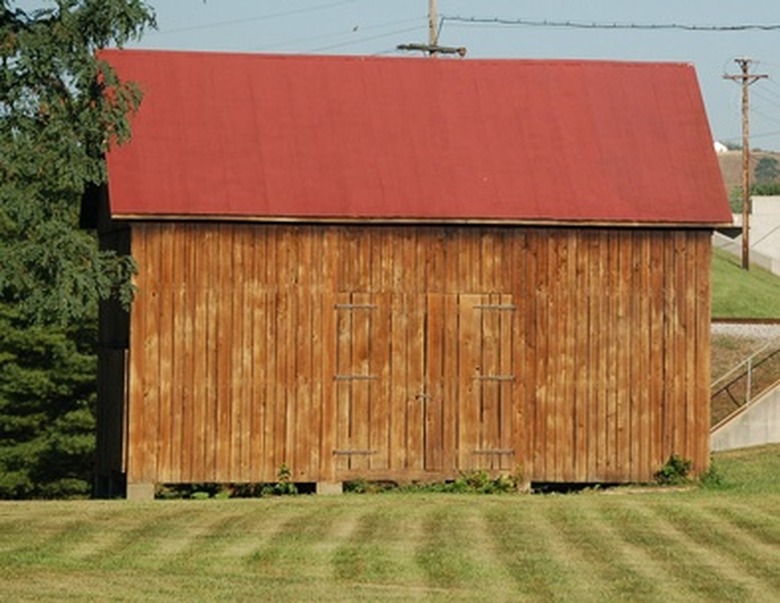How To Build A House On A Pier Foundation
Things Needed
-
Shovel
-
Post-hole digger (optional)
-
Wood stakes
-
String
-
Level
-
Tape measure
Tip
Nothing is more important than establishing a firm foundation for your house. If at all possible, get professional help or oversight.
Salvaged electric poles often make acceptable piers.
Warning
Large piers are extremely heavy and can roll onto unsuspecting targets. Exercise caution.
A pier foundation is an excellent way to reduce the overall cost of your home. A typical concrete foundation can consume a disproportionately large share of your construction budget — especially in colder areas where the frost line is several feet deep. If you don't require the basement or crawlspace provided by a continuous foundation, a pier foundation can solidly support your house while drastically reducing your materials cost. And because a pier foundation is much more simple to construct, you can realize even greater savings in labor if you are able to do some of the work yourself.
Stake out the House
Step 1
Consult your local building inspector or construction department to determine if any regulations or restrictions apply to building a residence on a pier foundation.
Step 2
Determine where you want to build your house and set stakes in the approximate locations of the four corners.
Step 3
Adjust the stakes until all four sides exactly match the dimensions of your house.
Step 4
Stretch strings between the stakes to establish the exact outside dimension of your foundation.
Step 5
Move two stakes together until your foundation is "square," meaning all the angles are 90 degrees. You accomplish this by measuring the diagonals and adjusting one side until the diagonal measurements are exactly the same.
Step 6
Adjust the height of the strings to establish the top of your pier foundation, making sure all the strings are perfectly level. The four strings now form a rectangle that establishes the exact location and height of your foundation.
Digging the Holes
Step 1
Consult a construction handbook or structural engineer to determine the necessary diameter and spacing of your piers. This will depend on the number of stories your house will have, the construction materials you will use, and the size of your sill (the beam that sits on top of the piers).
Step 2
Measure along the strings and mark the exact middle of the pier locations.
Step 3
Dig the holes for the piers. Consult a building inspector or professional contractor to determine the necessary hole depth (it must extend below the frost line for your area). You can rent a powered post-hole digger or dig by hand, but hand digging is next to impossible if your holes are several feet deep or your soil is heavy or rocky.
Set the Piers
Step 1
Bring your piers to the building site. They must be treated with some type of preservative.
Step 2
Set the piers in the holes. The higher your piers extend above the ground, the more carefully you need to use a level to check that they are exactly vertical.
Step 3
Pack soil into any open spaces in the hole. The goal is to make the piers as solid and immovable as possible. In some soils, it is beneficial to mix sand or gravel into the soil as you fill in the hole; this improves drainage around the pier.
